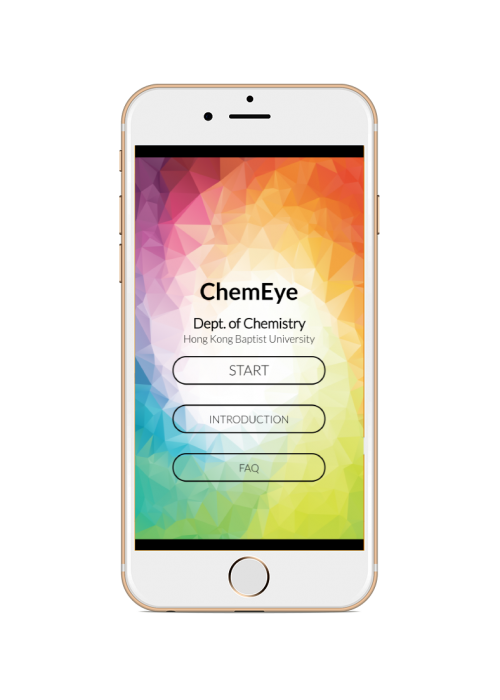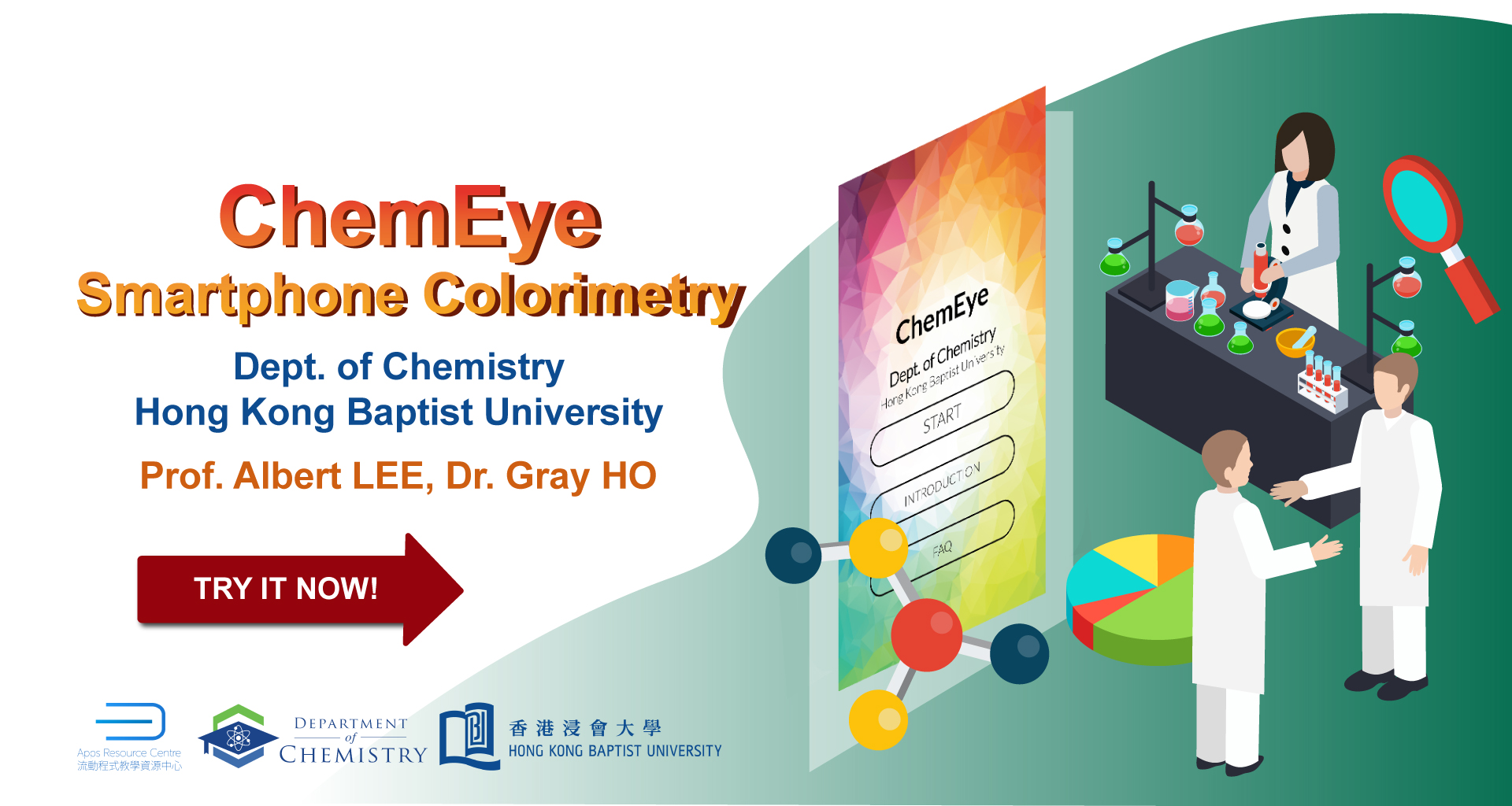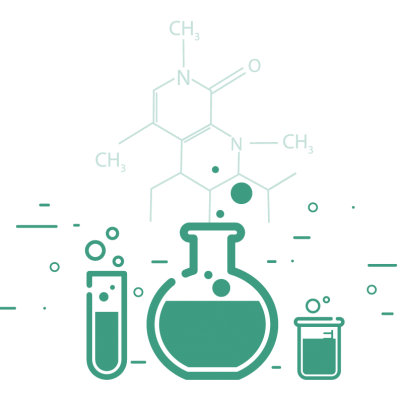
ChemEye – Smartphone Colorimetry
Prof. Albert LEE, Dr. Gray HO – Hong Kong Baptist University
This project makes use of the ChemEye app on mobile device as the detector and readout device for colorimetric measurement. Such development would replicate the functions of a US$50,000 spectrophotometer for only US$200. This allows students to perform colorimetric experiments at any time and in anywhere, which provides additional T&L activity in and/or after class. ChemEye is based a mobile app that utilizes the built-in-camera, along with a specially developed cradle (combining a microscope slide coated with photonic crystals) as a sensor for a spectrophotometer.
The ChemEye app has been developed in May 2018 and is freely available on the App Store and Google Play Store. The ChemEye app consists of two modes of operation of calibration and measurement. In the calibration mode, the built-in camera of smartphone captures color image of standard solution placed in front of the smartphone.This image capturing is repeated several times for the same type of standard solution of different known concentrations and the RGB values of these images are automatically extracted and stored with the respective input concentration values. These RGB values are further used to calculate the absorbance and construct the calibration profile. In the measurement mode, the app is used to capture a color image of sample solution and based on the calibration profile of this type of solution previously computed in the calibration mode, the app computes and outputs the concentration of this solution. Furthermore, the user-app interface design employs on-demand tooltips, so that information and instructions are revealed just-in-time as the user progresses through the workflow.
Various analytical methods for different kinds of analytes in real samples have been developed based on the ChemEye app and have been validated by the standard method using conventional UV-visible spectrophotometer. The methods developed and validated include:
- Determination of iron in food supplement;
- Determination of reducing sugar in candy and herbal medicine;
- Determination of protein in milk;
- Determination of food preservative, such as nitrite in ham;
- Determination of nitrite, nitrate, phosphate, copper, manganese, and sulfate in river water;
- Determination of nitrogen dioxide in air; and
- Determination of food colorants, such as sunset yellow and tartrazine, in beverage.
It is found that the accuracy, precision, and sensitivity of the smartphone-based method are comparable to those of conventional method, accuracy of ±10% and precision in terms of RSD of <10%. It is, therefore, feasible and practical to apply the ChemEye app for colorimetric experiments. New analytical methods based on the ChemEye app are in development, to match our syllabi of integrated science laboratory & general education course and the interests of collaborators (see below). For example:
- Determination of copper in wastewater;
- Determination of melamine in milk;
- Determination of alcohol content in beer and wine, and human breath;
- Determination of dissolved oxygen in polluted water; and
- Determination of sugar in food and beverage.
Apart from the colorimetry function, a preliminary study has been carried out to test whether fluorometric measurement is feasible and practical using the app. Moreover, the quinine content in beverage has been successfully determined using the smartphone-based method in comparison with the standard method using spectrofluorometer. In the same vein, this study is currently expanding to determine the vitamin content, such as B2 and K1, in food. In the further collaboration with the Apps Resource Centre at HKBU, new functions will be added to the ChemEye app for improvement.




